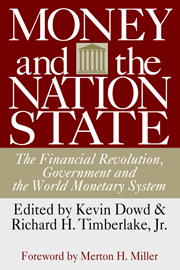The International Monetary Fund (IMF) has long presided over the world’s heavily indebted lower-income countries (LICs) as a hybrid bankruptcy court and controlling lender. Under its aegis, an endless series of sovereign-debt restructurings have taken place, negotiated within the parameters of an IMF debt-sustainability analysis, IMF technical assistance, and an IMF standby agreement. Meanwhile, China’s Belt and Road Initiative (BRI) has propelled China into a leading position among the world’s official creditors, surpassing all members of the Paris Club and challenging the IMF’s central position. China has made more than $800 billion available via the BRI for infrastructure projects in Asia, Africa, Europe, and Latin America since 2013.
During the pandemic, the G20 introduced programs designed to mitigate the debt burdens of LICs. These include the Debt Service Suspension Initiative, which provides for a rescheduling of debt payments without debt reduction, and the Common Framework for Debt Treatments (CFDT), which provides for more comprehensive restructuring. Eligibility for either requires a request for IMF assistance. The CFDT requires that the country receiving assistance requests accommodation from private creditors that is at least as good as the treatment requested from bilateral official creditors. For its part, China has taken the position that its debts are secured by identifiable collateral, rather than the general fiscal resources of the debtor state. If that is the case, China would move to the top of the list among foreign creditors and would be able to put its hands on the collateral. This is precisely what it’s done with the Hambantota International Port in Sri Lanka. Private sovereign-debt markets sought to banish such tactics over the last decade, when debt restructurings in Argentina and Greece were undermined by hedge funds’ asserting seniority and thwarting collective action among creditors.
The market for LIC sovereign debt thus faces a battle between the modus operandi of the IMF/G20 and that of China, both of which threaten the hard-won reforms produced by private market pressure. Private sovereign creditors face forced principal reductions from the IMF on one hand, and subordination to China on the other. LIC debtors, for their part, find their fates and finances caught between two titans.
However, there is a third way: an alternative that leans on private financial markets for support, and begins with monetary reform. For example, the introduction of a currency-board system removes the specter of falling into a debt trap. In addition, currency boards also help avoid the external-balance problems that make LICs repeat clients of the IMF. First, fixing the exchange rate arrests local-currency depreciation and prevents the cost of foreign-debt service from spiraling upward. Second, a currency board’s credible fixed exchange rate—credible because the money issued by a currency board is fully backed by foreign anchor-currency reserves—lowers inflation and interest rates, stimulating demand for the local currency. The financial system accumulates foreign assets, helping to improve the balance of payments. Third, currency-board countries attract foreign capital, allowing local investment to grow faster than local savings. Increased investment and an improving trade balance lift GDP growth, which combined with lower interest rates and inflation stabilizes or reduces the external-debt burden. Finally, currency boards constrain government budgets by preventing extensions of credit from the monetary authorities to the government. Government spending is disciplined by tax receipts and debt markets.
In 1997, Bulgaria faced hyperinflation raging at 242 percent per month, as well as a banking crisis. GDP had contracted the prior year by 8 percent. In July 1997, Bulgaria introduced a currency board, fixing the lev to the mighty Deutsche mark. By the end of 1998, the banking system was solvent, money-market rates fell from triple digits to 2.4 percent, foreign-exchange reserves more than tripled, and the economy grew by 4.3 percent. Bulgaria’s fiscal balance swung from a deficit of 8.1 percent of GDP in 1996 to a 1.1 percent surplus in 1999. Today, Bulgaria has the second-lowest debt-to-GDP ratio in the European Union, behind only Estonia, another currency-board adopter.
A debt-burdened sovereign may request that a currency board system be part of its IMF-supported program, as the IMF cannot reasonably reject such a request. Alternatively, that sovereign may simply go it alone, designing its own exit strategy around currency-board-based monetary reform. Either way, LICs can choose to leverage monetary reform and market discipline to improve their financial health, or they can continue being treated as leverage in a messy game between the IMF, the United States, and China.











